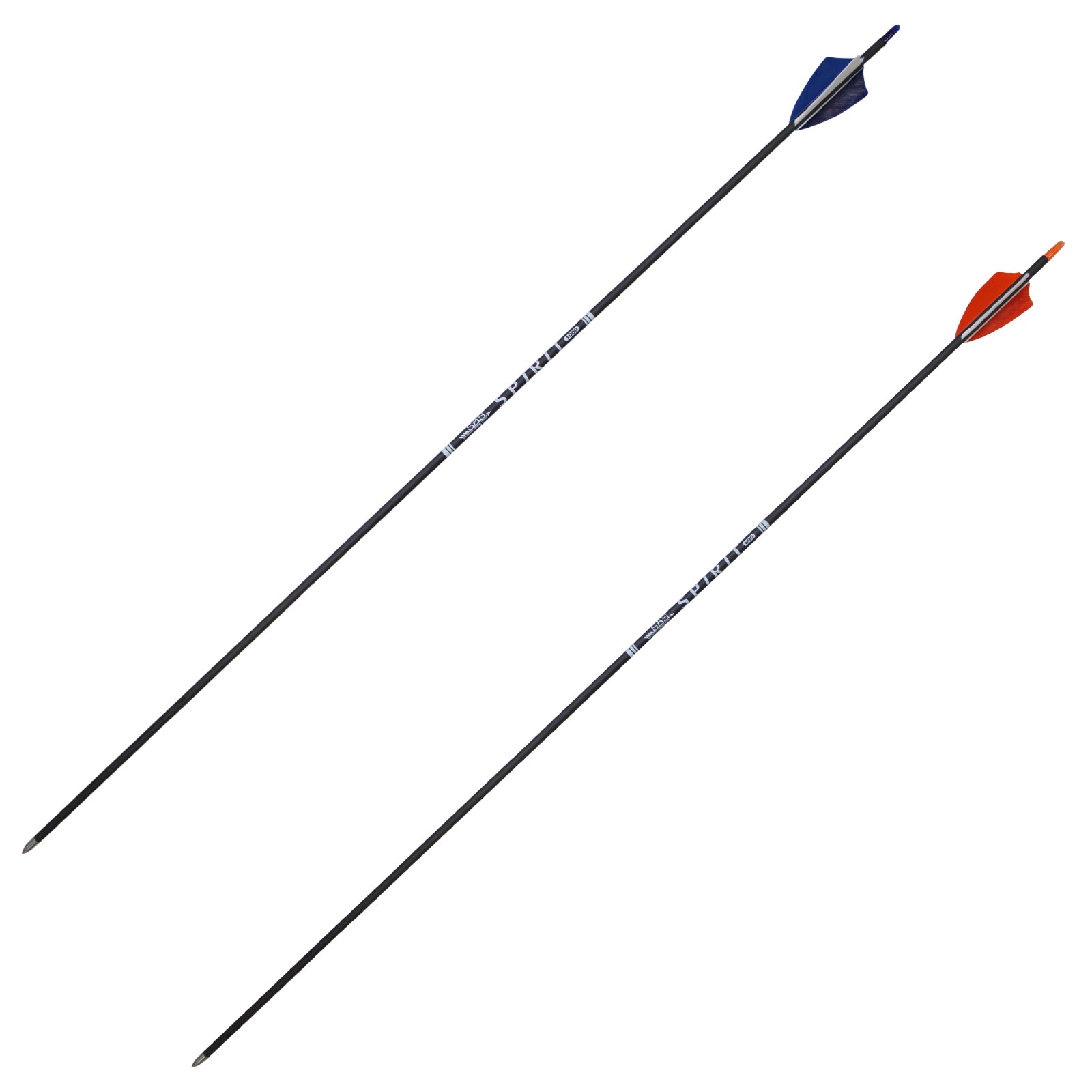US 48 States Only.
Tax Free Outside CA.
US 48 States Only.
Tax Free Outside CA.


Just how passionate are you about conquering your archery dreams? If the answer is something along the lines of ‘a whole lot’, then you’re bound to need the right arrows for your bow. And whether it’s a recurve or a compound bow, this is an element you don’t want to be careless with!
In Part One of this guide, you learned the basics of arrow anatomy: material, length, and diameter. These are the foundations you absolutely need to know to choose the best arrows for hunting or target-shooting.
But is it all? Absolutely not— these bolts still hold a lot of mystery for you to discover. Keep reading to find out what aspects you have to pay close attention to when picking your projectiles. To victory!
Weight
In the world of shooting, weight means force. Roughly, the heavier a bolt is, the stronger it is on impact— but also the harder it is to shoot. That’s why your arrow’s weight always has to suit the poundage of your bow.
Weight isn’t an isolated thing: it’s determined by the diameter, the materials, and the thickness of the walls that make up the arrow. The accepted way to measure arrow weight or density is GPI— grains per inch.
So, do you go heavy or light? It depends on your shooting style and your bow poundage.
All arrows tend to be between 300 and 480 GPI. Now, take the total weight (tips, nock, etc. included) of the arrow you want and divide it by the number of the weight of your bow. The result should never ever be below 5 grains per pound of bow draw. If it is, indeed, lower, that arrow is too light for you and would damage your equipment for good.
If you’re only starting out, choose one set of arrows in which all weigh the same, and stiick to it for a while to get your shooting feet under you.
Spine
Ever seen an arrow fly in slow motion? Check out this video:
See how it wiggles like a swimming fish? The spine of an arrow is exactly that wiggle— and, believe it or not, it’s incredibly important. If your arrow’s too stiff, it won’t bend the right way and will be inaccurate. Too much wiggle (a weak arrow) is also bad.
What’s the right amount of spine for you? The best way to determine is to look for what the manufacturer recommends. Typically, when you’re buying from the online store, you’ll read a product’s good for bows “up to x lbs.” (a flexible recommendation).
Once you’ve established that, it comes down to a few factors:
Tip
After you’ve taken a good look at the other, more structural aspects of your arrow, you need to consider the tip. As you know, this part of the anatomy is often interchangeable, meaning you can choose different tips to get slightly different versions of your arrow.
In a nutshell, lighter tips for lighter bows and the same on the other side of the spectrum. For hunting, you want tips that are on the heavier side; and it’s the opposite for target practice.
If you don’t want to worry about tips at this stage, it’s quite all right: plenty of awesome arrows come all set up and don’t require you to do anything. If you’re ready for the next step, you can choose different types of tips:
Weight, spine, and points are essential factors to create a badass bow and archer, so choose your arrows wisely. Now that you’ve got the information, you’ve got the power! Head over to Part III to become the ultimate arrow expert.
Leave a comment